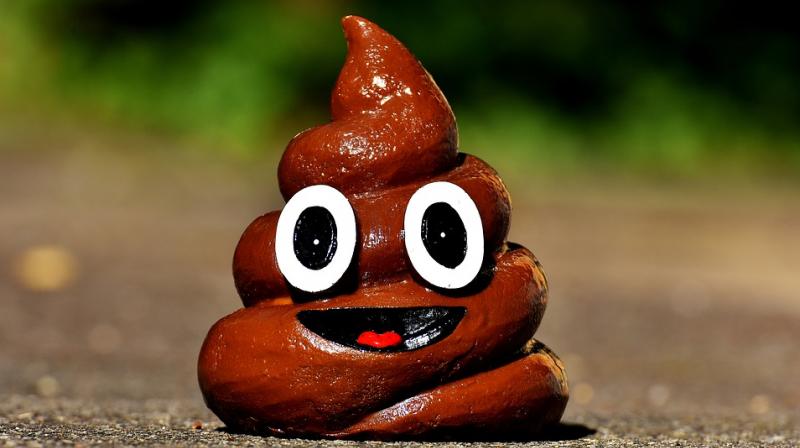
Poop, often known as feces or stool, is a normal biological waste product that is frequently seen as taboo or humiliating to discuss. Despite its unsavory image, excrement is a vital sign of general health and can give valuable insights into the digestive system’s workings. There are numerous intriguing tidbits and facts to examine when it comes to this often-overlooked topic, ranging from the various hues and textures to the fascinating world of animal dung.
The average human produces about 128 grams of poop per day. This amount can vary depending on factors such as diet, age, and overall health. For example, infants may produce more poop due to their high milk intake, while older adults may produce less due to slower digestion. However, consistently producing significantly more or less poop than usual can be a sign of underlying health issues.
The color of poop can vary depending on what a person eats. Green poop, for example, can be caused by consuming leafy green vegetables or food coloring. Red or black poop can indicate bleeding in the digestive tract, while pale or clay-colored poop can be a sign of liver or bile issues. Monitoring the color of one’s poop can help identify potential health concerns and prompt a visit to a healthcare provider.
A healthy poop should be brown in color, well-formed, and have a slight odor. This consistency is a sign that the digestive system is working properly and absorbing nutrients effectively. Poop that is too hard or too loose, or has a strong and unpleasant odor, can indicate digestive issues or other health problems.
The longest poop ever recorded was over 26 feet long. This record was set by a man named Anna Swami, who claimed to have not defecated for 47 days before producing the lengthy stool. While this feat may seem impressive, it is not recommended to hold in one’s poop for extended periods of time, as it can lead to health issues such as constipation, hemorrhoids, and even bowel obstruction.
Poop is made up of about 75% water and 25% solid matter. The solid matter consists of undigested food, fiber, and dead cells from the intestinal lining. The water content helps to move the solid matter through the digestive tract and eventually out of the body. Drinking enough water and staying hydrated can help regulate the consistency of poop.
The average person will produce over 14,000 pounds of poop in their lifetime. This amount of poop can take up to a year to biodegrade in the environment. Proper disposal of human waste is important for preventing the spread of disease and contamination of water sources.
Dogs have been trained to detect certain types of cancer by sniffing a person’s poop. This is because cancer cells produce volatile organic compounds that can be detected by a dog’s keen sense of smell. However, this method is not a substitute for traditional cancer screening and diagnosis.
In ancient Rome, people used a sponge on a stick called a “xylospongium” to clean themselves after using the bathroom. The sponge was soaked in salt water and reused by multiple people, which likely contributed to the spread of disease. The invention of toilet paper and improved hygiene practices have significantly reduced the risk of disease transmission.
The word “feces” comes from the Latin word “faex” meaning “dregs” or “sediment.” This reflects the fact that poop is made up of waste materials that are leftover after the body has absorbed the necessary nutrients from food.
The first recorded use of toilet paper was in China in the 6th century AD. The toilet paper was made from soft, smooth paper and was intended for use by the emperor and his family. However, it wasn’t until the 19th century that toilet paper became widely available and affordable for the general population.
Elephant poop can weigh up to 50 pounds. This massive amount of poop is due to the elephant’s large size and high-fiber diet. In some parts of the world, elephant poop is collected and used as a source of paper and fuel.
The world’s largest poop museum, the Unko Museum, is located in Yokohama, Japan. The museum features various poop-themed exhibits and interactive installations, including a poop-shaped ball pit and a toilet-themed slide. The museum’s goal is to promote awareness of sanitation and encourage healthy bathroom habits.
The shape of poop can provide insight into a person’s health. Narrow, pencil-shaped poop can indicate a bowel obstruction, while watery, diarrhea-like poop can be a sign of infection or inflammation. Changes in poop shape or consistency should be discussed with a healthcare provider.
In the Middle Ages, people used dried corncobs, leaves, and even rocks to wipe themselves after using the bathroom. This lack of proper hygiene practices contributed to the spread of disease and illness. Improvements in sanitation and hygiene practices have greatly reduced the incidence of communicable diseases.
The term “coprophagia” refers to the practice of animals eating poop. Some animals, such as rabbits and guinea pigs, eat their own poop as a way to absorb nutrients that were missed the first time around. However, in humans, coprophagia is considered a disorder and is often associated with mental health issues.
A person’s poop can contain over 100 different types of bacteria. While some of these bacteria are harmful, many are necessary for proper digestion and overall health. Maintaining a healthy balance of gut bacteria is important for maintaining overall health.
The ancient Egyptians believed that consuming poop, particularly that of young children, could cure certain illnesses. This practice was known as “fecal therapy” and was also used by ancient Chinese and Indian cultures. Today, some alternative medicine practitioners still use fecal therapy as a treatment for various health conditions.
The Bristol Stool Scale is a tool used to classify the shape and consistency of poop. The scale ranges from type 1, which is hard and lumpy, to type 7, which is entirely liquid. Understanding the type of poop a person is producing can help identify potential health issues.
In many parts of the world, squatting toilets are the norm. Squatting toilets require a person to squat over a hole in the ground rather than sitting on a seat. Advocates of squatting toilets claim that they promote better bowel movements and reduce the risk of certain health issues.
In 2018, a man in Ireland won an Ig Nobel Prize for his work on a method for identifying stolen cars by analyzing the DNA found in dog poop. The method involves training dogs to recognize the unique scent of a car owner’s DNA, which can be found in their dog’s poop.
The pooping habits of animals can provide valuable insights into their behavior and health. For example, studying the poop of animals such as whales, dolphins, and seals can provide information about their diet and migration patterns.
In 2019, a company called OpenBiome began paying donors for their poop. The company collects fecal matter from healthy donors and uses it to treat patients with infections caused by a bacteria called C. difficile. The treatment, known as a fecal microbiota transplant, involves transferring healthy bacteria from a donor’s poop to a patient’s gut to restore balance and fight infection.
The “poop deck” on a ship refers to the deck at the stern, or rear, of the ship where sailors would go to use the bathroom. The term “poop” comes from the French word “la poupe,” which means “stern” or “rear.” Today, the term is mainly used as a slang term for poop itself.
Poop FAQs: Everything You Wanted to Know (But Were Afraid to Ask)
Poop, bowel movements, waste products – whatever you call it, it’s a natural part of life that often comes with a lot of curiosity (and sometimes apprehension). Here are some of the most common questions people search about poop, answered in all their glory:
1. How often should I poop?
pen_spark
There’s no one-size-fits-all answer to this. A healthy pooping frequency can range from three times a day to three times a week. The key is to be consistent and listen to your body. If you’re going much less frequently or more frequently than usual, and it’s accompanied by other changes or discomfort, then that might be a sign to see a doctor.
2. What does healthy poop look like?
Generally, healthy poop should be brown in color, have a sausage-like shape, and be easy to pass.
3. What do different poop colors mean?
While brown is the usual suspect, occasional variations can happen. Here’s a breakdown of some color variations:
- Green: Green poop can be caused by green leafy vegetables in your diet, or it could indicate that food is moving too quickly through your digestive system.
- Black: Black stools can be caused by iron supplements or certain medications, but they can also indicate bleeding in the upper digestive tract. If you see black stools and it’s accompanied by other symptoms, see a doctor.
- Red: Red streaks in your stool could be from hemorrhoids, but bright red blood might indicate bleeding in the lower digestive tract. See a doctor if you experience red stools.
- Yellow or greasy: This could indicate problems with fat digestion.
4. Why does my poop float?
Floating poop can sometimes happen due to trapped gas bubbles. However, if it happens frequently, it could indicate a digestive issue like malabsorption, where your body has trouble absorbing nutrients from food.
5. What causes constipation?
There are many reasons for constipation, including:
- Lack of fiber in your diet
- Dehydration
- Lack of exercise
- Certain medications
If you’re experiencing constipation, increasing your fiber intake, drinking plenty of fluids, and getting regular exercise can help. There are also over-the-counter laxatives available, but consult a doctor if constipation is persistent or severe.
6. What causes diarrhea?
Diarrhea is frequent, loose stools and can be caused by:
- A viral or bacterial infection
- Food intolerance
- Certain medications
While mild diarrhea usually resolves on its own, staying hydrated is crucial. If diarrhea is severe or accompanied by other symptoms like fever or vomiting, see a doctor.
7. Should I be worried about mucus in my poop?
Small amounts of mucus are normal and help lubricate your stool. However, large amounts or persistent mucus could be a sign of an underlying condition. If you’re concerned about mucus in your stool, consult a doctor.
8. When should I see a doctor about my poop?
See a doctor if you experience any of the following:
- Blood in your stool (bright red or black)
- Severe constipation or diarrhea
- Persistent changes in stool color, consistency, or frequency
- Painful bowel movements
- Unexplained weight loss
Remember, poop is a good indicator of your digestive health. If you have any concerns, don’t hesitate to talk to a doctor. They’ve seen it all (literally) and are there to help!









